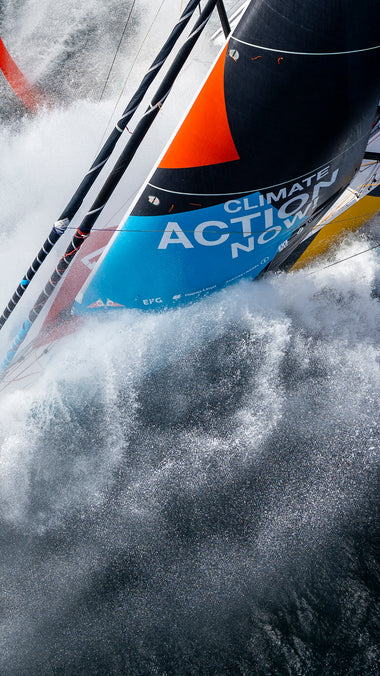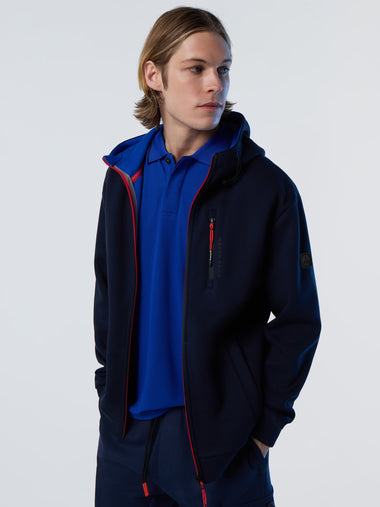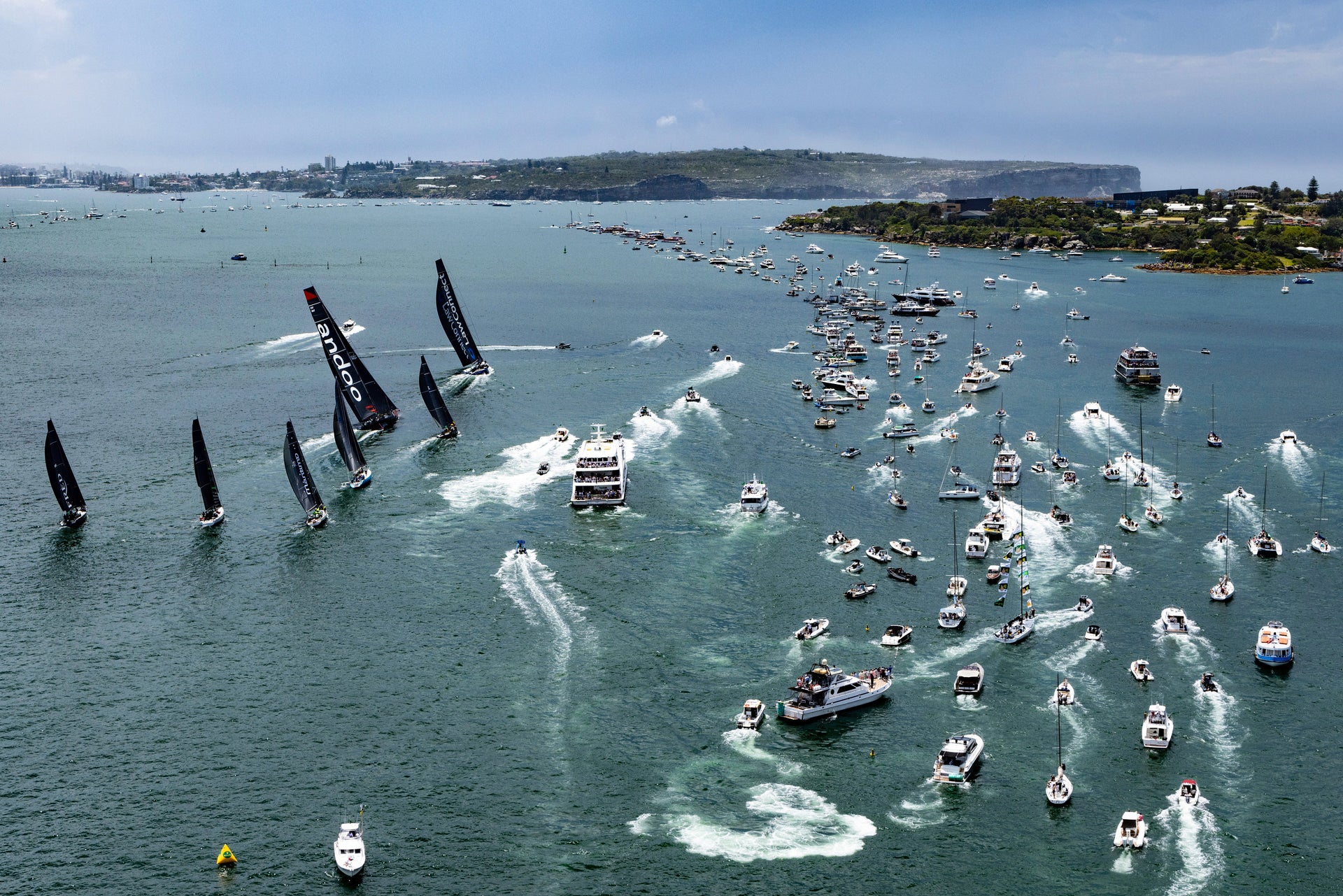BODACIOUS DREAM: OFFSHORE SAILING WITH 3Di
A solo sailor at heart, Dave Rearick had a lifelong dream of sailing around the world. After years of racing both internationally and on his home waters of Lake Michigan, Rearick crossed paths with Jeff Urbina and Gaye Hill. Together, the trio envisioned an around-the-world expedition with an environmental focus. Through the creation of Bodacious Dream, Rearick would sail single-handedly around the world and bring the experience full-circle to followers via the campaign’s website and social media accounts. “One our biggest goals for Bodacious Dream Expeditions was to give people an opportunity to learn about the ocean, and foster awareness that it needs our help” said Rearick. A Kiwi 40FC (Class 40) designed by Bruce Farr and built in Wellington, NZ, the Bodacious Dream was ready for racing in early 2012, outfit with a fresh inventory of North sails.
First up on the training schedule was the 2012 Atlantic Cup, an offshore race committed to being the most environmentally friendly in the United States. Rearick was introduced to Richard “Bicky” Bicknell, of North Sails in Auckland, New Zealand. After weighing many options, it was decided that Bodacious Dream would be among the first of its kind to sail with North Sails 3Di. “North Sails delivered a beautiful 3Di 760 main and solent jib for us, designed with the keen eye of Auckland-based sail designer Magnus Doole,” said Rearick, who hoisted the new sails for the Atlantic Cup start in Charleston, SC that May. With a 3rd place finish in Leg 1, Rearick and double-handed partner, Matt Scharl, went on to win the 2nd leg from New York City to Newport, RI and, after racing the inshore portion with a six man crew (including North Sails’ Jay Hansen), claimed 2nd overall. Bodacious Dream was off to a great start. “In the following year, we competed in the Quebec to St. Malo race, the Normandy Channel Race and the Class 40 Worlds in France,” said Rearick, who sailed solo back to Rhode Island after the worlds. Racing again with Matt Scharl, Bodacious Dream won the 2013 Atlantic Cup and before he knew it, Rearick was gearing up for his October 2nd departure in the Global Oceans Race to sail singlehandedly around the world.
“Most sailors underestimate the amount of preparation it takes to complete a circumnavigation,” said Rearick. “The entire boat is constantly maintained. Before long legs, we always had the sails looked over by the local service crew. The Durst brothers at North Sails in South Carolina took good care of us during our Atlantic Cups, and before the first leg to Bermuda, Eric Wakefield and his team at North Sails in Rhode Island did another check-over and installed a top reef in the mainsail. I cannot say enough about their reliable and friendly support.”
“The Bodacious Dream was about becoming more aware of our presence on earth, and I feel that was a success. By spending time on the ocean, we build a philosophy of awareness.”
In a perfect world, Bodacious Dream would have sail a lap around the planet alongside other single and double-handed sailors from around the world. Rearick made the tough decision to set off alone after news broke that the start of the Global Oceans Race 2013 would be postponed to the following year, “Dreams never come true the way you plan them. You have to take what you can get and make the most of it” said Rearick.
Bodacious Dream set off from Jamestown, RI that October and made it to Bermuda without a hitch. She soon set sail for Cape Town – first heading south through calm vistas and light storms to the bulge of Brazil, then east to arrive in Africa on December 2, 2013. From Cape Town, Rearick took on the Southern Ocean en route to Wellington, NZ. Upon arrival, Bodacious Dream had sailed just over 30,000 nautical miles – all with the same main and jib that Rearick hoisted for the 2012 Atlantic Cup. North’s Bicknell met Rearick in Wellington for a sail check. “Bicky was pleased with how the sail shape was holding up, and after some quick maintenance at the loft in Wellington, I was headed for the Galapagos.”
Bodacious Dream was one of the first Class 40s to adopt 3Di, which at the time was fairly new to offshore sailing. Designer Magnus Doole tailored an inventory of versatile sails capable of accepting the wide range of wind speeds and sailing angles typically found in offshore sailing. “The main and jib on Bodacious Dream are some of the earlier 3Di offshore sails that we’ve made. Doug Slocum and I made adjustments to our standard 3Di layouts to bring them more in line with what we saw in the VOR70 class. Our goal was to reduce the overall weight without compromising their durability and shape holding capacity. After checking in with the boat in Wellington, we were happy to find evidence of longevity in both material and shape,” said Doole, who specializes in designing offshore sails for Class 40s, TP52s, the Volvo Ocean Race, and various maxi yachts.
As of today, the North Sails 3Di 760 main and jib on Bodacious Dream have sailed just under 43,000 nautical miles. Rearick will continue to take good care of them, “I’ll say again that maintenance is critical. As a whole, the North Sails sail care network has done a great job and I had no major setbacks during the trip. The sails are still in great shape, and I would not recommend anything other than 3Di for offshore sailing or long term cruising” said Rearick.
Rearick and Bodacious Dream were welcomed home by friends and family in Rhode Island on June 12, 2014, having completed a lap around the world in eight and a half months (including downtime).
“The unexpected parts were the most memorable,” said Rearick, recalling a moment aboard after a thunderstorm in the southern ocean. “There was one night on the passage from Cape Town to Wellington; the clouds cleared after the storm and everything was pitch black. All around me there were masses of bioluminescence in the water. What appeared to be these immersed glowing orbs were lighting up the waves around the boat. It was magical not knowing what they were, feeling like I was afloat in a star-lit space for a mile.”
“The Bodacious Dream was about becoming more aware of our presence on earth, and I feel that was a success. By spending time on the ocean, we build a philosophy of awareness. Paying attention to our environment is a critical part of life on earth, and it starts with awareness.”



























